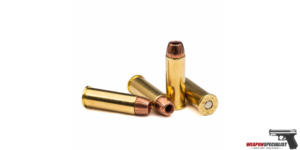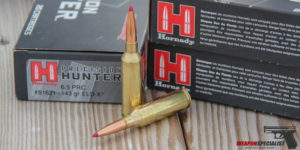When delving into the realm of firearms and ammunition, one encounters a fascinating comparison between two prominent calibers: 5.56 NATO and 7.62×51. These numerical designations not only represent measurements but also encapsulate distinct characteristics that define their roles on the battlefield and in civilian applications.
As enthusiasts of firearms and ballistics, we embark on a journey to explore the nuances of 5.56 NATO and 7.62×51, unraveling their differences, applications, and the captivating narratives behind these two influential cartridges. Read below:
What is 5.56 NATO Cartridge?
The 5.56 NATO cartridge, also known as the .223 Remington, is a small, lightweight cartridge that was developed in the 1960s. It was designed to replace the larger, heavier .308 Winchester cartridge, which was used in the M14 rifle and other weapons. The 5.56 NATO cartridge is now used in a variety of rifles, including the M16 and AR-15.
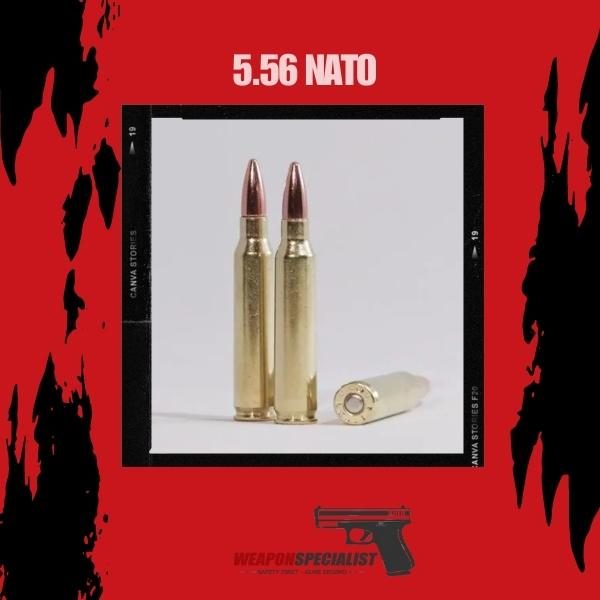
One of the main advantages of the 5.56 NATO cartridge is its low recoil, which makes it easy to control in semi-automatic and automatic weapons. The cartridge also has a very flat trajectory, which makes it ideal for long-range shooting. However, the small size of the bullet means that it has less kinetic energy than larger cartridges, which can limit its effectiveness on the battlefield.
| Specification | Value |
|---|---|
| Cartridge Type | Rifle |
| Bullet Diameter | 5.70mm (.224 in) |
| Case Length | 44.70mm (1.76 in) |
| Overall Length | 57.40mm (2.26 in) |
| Cartridge Weight | ~12-14 grams (~0.42-0.49 oz) |
| Bullet Weight | Varies (typically 55-77 grains) |
| Muzzle Velocity | Varies based on load |
| Muzzle Energy | Varies based on load |
| Bullet Type | Full Metal Jacket (FMJ), Hollow Point (HP), Ballistic Tip, etc. |
| Pressure | Typically around 55,000 – 62,000 psi |
| Effective Range | Around 600 meters (depending on barrel length and ballistic characteristics) |
| Platform | Compatible with firearms chambered in 5.56 NATO or .223 Remington |
| Usage | Military and civilian rifles |
| Origin | United States |
| Introduced | 1963 |
What is 7.62×51 NATO Cartridge?
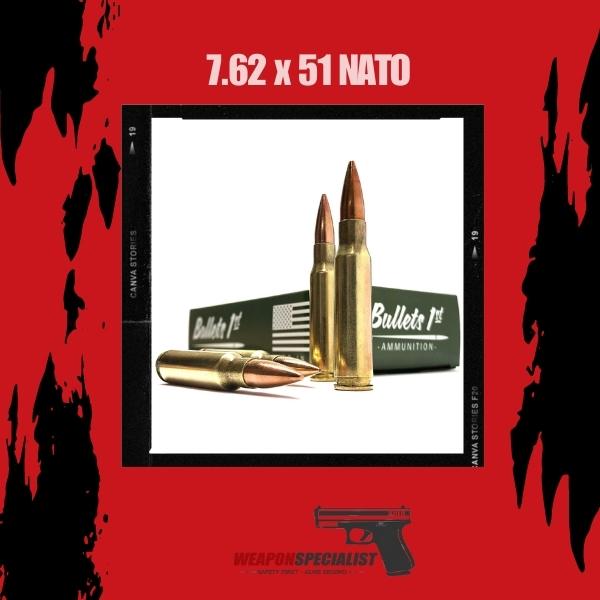
The 7.62 NATO cartridge, also known as the .308 Winchester, is a larger, heavier cartridge that was developed in the 1950s. It was designed to provide more stopping power than the .30-06 cartridge, which was used in World War II. The 7.62 NATO cartridge is now used in a variety of rifles, including the M14, G3, and FN FAL.
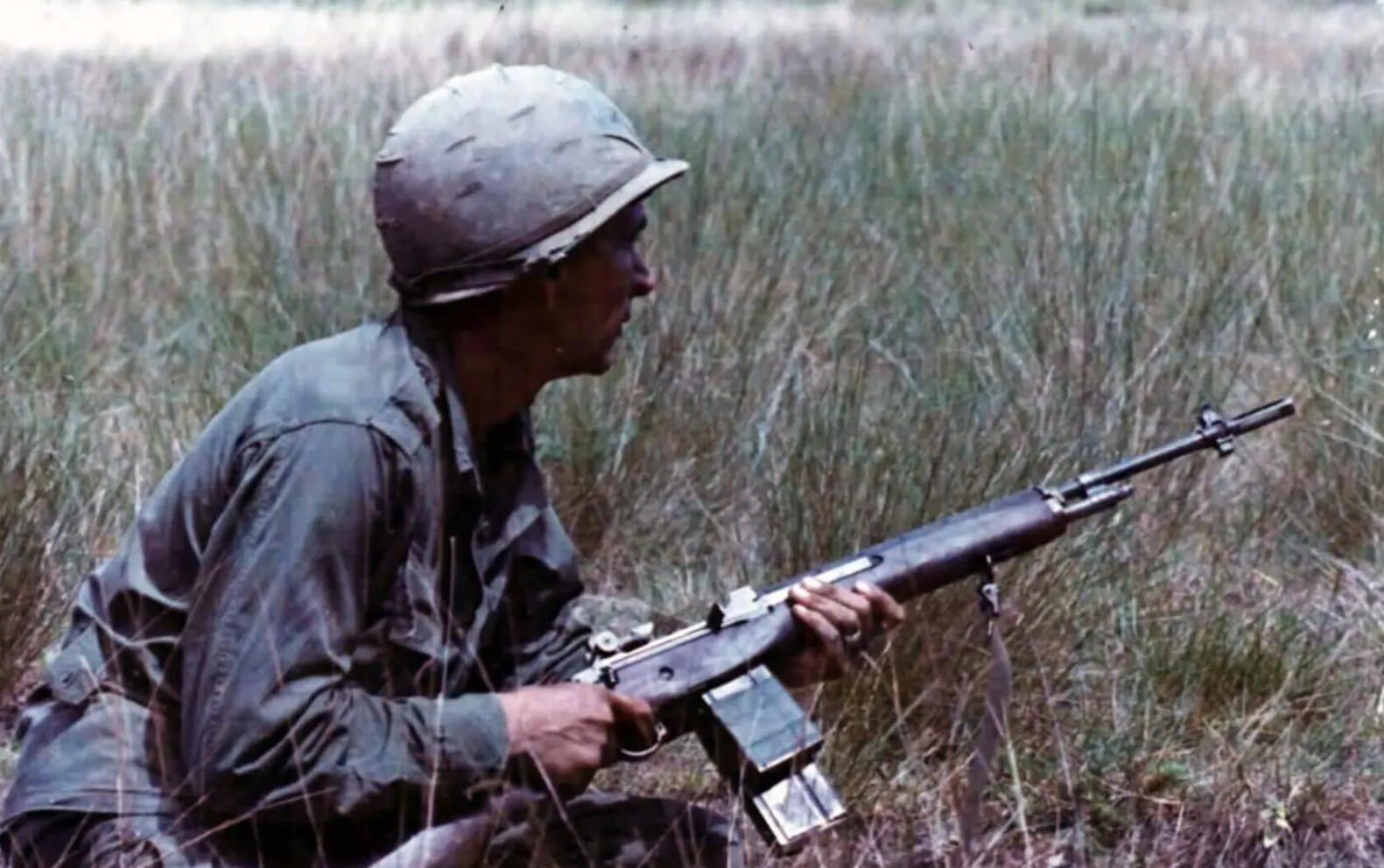
One of the main advantages of the 7.62 NATO cartridge is its stopping power, which makes it ideal for engaging targets at longer ranges. The cartridge also has a higher ballistic coefficient than the 5.56 NATO cartridge, which means that it is less affected by wind drift. However, the larger size of the bullet means that it has more recoil, which can make it more difficult to control in automatic weapons.
Overall, the 5.56 NATO and 7.62 NATO cartridges are both excellent choices for rifle rounds, depending on the specific application. The 5.56 NATO cartridge is ideal for situations where low recoil and a flat trajectory are important, while the 7.62 NATO cartridge is better suited for situations where stopping power and long-range shooting are a priority.
| Parameter | Value |
|---|---|
| Cartridge Type | Rifle |
| Bullet Diameter | 7.82 mm (0.308 in) |
| Neck Diameter | 8.53 mm (0.335 in) |
| Base Diameter | 11.96 mm (0.470 in) |
| Case Length | 51.18 mm (2.015 in) |
| Overall Length | 69.90 mm (2.752 in) |
| Bullet Weight | Typically 147-150 grains (9.5-9.7 g) |
| Muzzle Velocity | Around 2,750-2,800 fps (840-850 m/s) |
| Muzzle Energy | Around 2,400-2,500 ft-lbs (3,300-3,400 J) |
| Pressure | Around 50,000-60,000 psi (345-414 MPa) |
| Type | Full Metal Jacket (FMJ), Open Tip Match (OTM), Hollow Point (HP), etc. |
| Common Use | Military and civilian rifles |
Quick 5.56 vs 7.62 Comparison Chart Table
| Parameter | 5.56mm | 7.62mm |
|---|---|---|
| Bullet diameter | 5.56mm (0.223 inches) | 7.62mm (0.308 inches) |
| Bullet weight | Typically 55 grains to 77 grains | Typically 147 grains to 175 grains |
| Muzzle velocity | Around 3,000 to 3,100 feet per second | Around 2,700 to 2,800 feet per second |
| Muzzle energy | Around 1,200 to 1,300 foot-pounds | Around 2,500 to 2,800 foot-pounds |
| Effective range | Up to 500 yards | Up to 800 yards |
| Recoil | Generally lighter recoil | Generally heavier recoil |
| Magazine capacity | Can typically hold more rounds | Can typically hold fewer rounds |
| Common platforms | AR-15, M16, M4, etc. | AK-47, M14, FN FAL, etc. |
Differences Between 5.56 NATO vs 7.62×51 Ammo Comparison
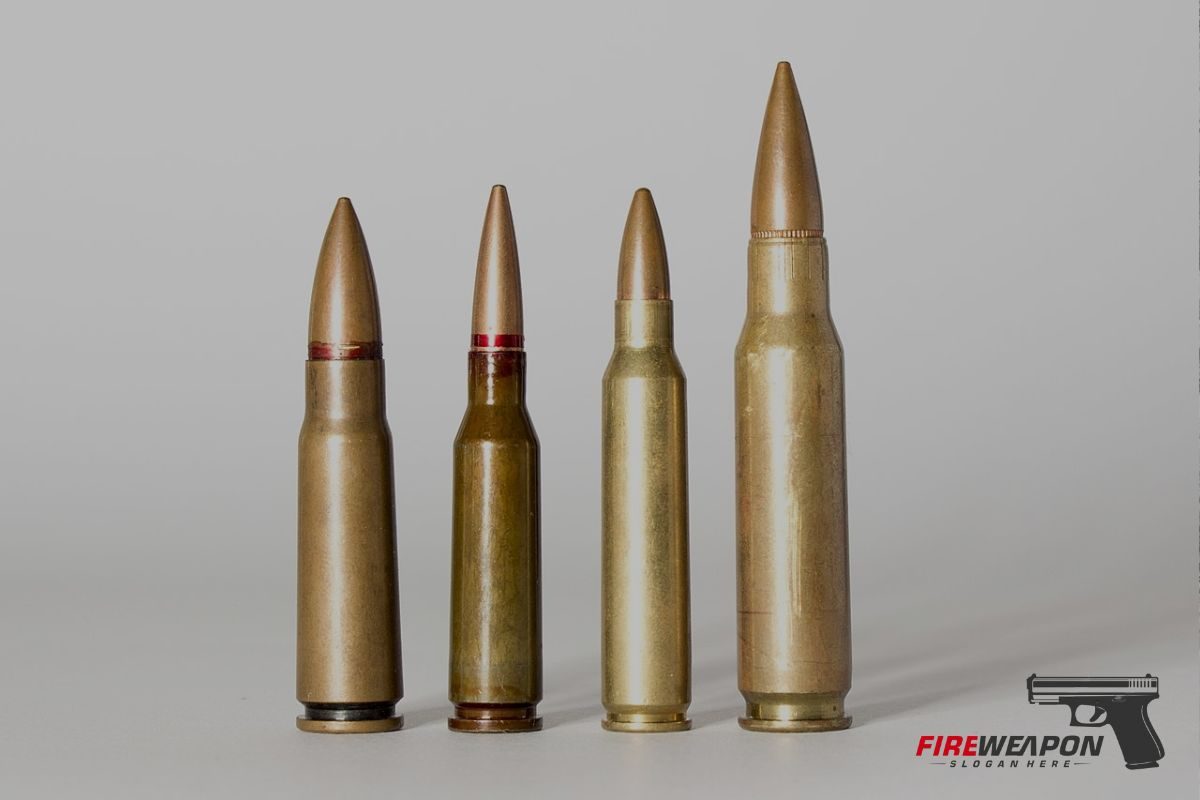
Caliber and Size
When comparing the 5.56 NATO and 7.62×51 calibers, their sizes play a crucial role in determining their performance and applications. Let’s delve into the characteristics of each caliber:
5.56 NATO:
- Caliber: 5.56mm (0.223 inches)
- The 5.56 NATO round is characterized by its smaller diameter, which contributes to its lighter weight and higher velocity.
- The compact size of the 5.56mm bullet allows for greater ammunition capacity in magazines, enabling sustained fire in assault rifles and carbines.
- Winner in Magazine Capacity and Weight Efficiency due to its smaller size, allowing for more rounds in a magazine and lighter overall ammunition load.
7.62×51:
- Caliber: 7.62mm (0.308 inches)
- The 7.62×51 round boasts a larger diameter, resulting in a heavier bullet and more significant energy upon impact.
- The greater mass of the 7.62mm bullet leads to higher recoil and reduced ammunition capacity in magazines compared to the 5.56mm round.
- Winner in Stopping Power and Penetration due to its larger size, resulting in increased energy transfer and better performance against obstacles and armored targets.
Winner:
The winner between the two calibers depends entirely on the context of use and the priorities of the firearm in question:
- If controllability, rapid follow-up shots, and versatility in close to intermediate ranges are key factors, then the 5.56 NATO comes out on top due to its lighter weight, higher velocity, and larger magazine capacity.
- On the other hand, if long-range accuracy, penetration, and stopping power are paramount, then the 7.62×51 prevails, thanks to its larger caliber and higher energy, making it more suitable for engagements at extended distances and against tougher targets.
Ballistics and Performance
5.56 NATO
- The 5.56 NATO round is known for its relatively high muzzle velocity, typically around 3,000 to 3,100 feet per second (fps).
- It has a flatter trajectory due to the higher velocity, making it easier to aim accurately at shorter and intermediate ranges.
- The 5.56 NATO round is designed to tumble or fragment upon impact, causing more significant damage to soft targets.
- Due to its lighter weight, the 5.56 NATO generates less recoil, enabling faster follow-up shots and better controllability.
- It is particularly effective in close to intermediate ranges, generally up to around 400-600 meters, depending on the specific rifle and ammunition.
7.62×51
- The 7.62×51 round has a larger caliber and higher bullet weight, resulting in lower muzzle velocities compared to the 5.56 NATO, usually in the range of 2,600 to 2,800 fps.
- It has a comparatively curved trajectory due to the lower velocity, requiring adjustments for longer-range shots.
- The 7.62×51 round is known for its better penetration capabilities and higher energy transfer on impact, making it more effective against hard targets and at longer distances.
- With its larger bullet and increased powder charge, the 7.62×51 generates more recoil, potentially affecting rapid follow-up shots and accuracy.
- It excels at longer ranges, often extending beyond 800 meters, and is chosen for scenarios where greater stopping power and penetration are priorities.
Winner:
- Short to Intermediate Range Combat: The 5.56 NATO holds an advantage due to its higher velocity, flatter trajectory, and fragmentation effects, providing excellent performance in urban and close-quarters combat situations.
- Long-Range Engagements and Penetration: The 7.62×51 is the preferred choice for long-range shooting and situations where penetration through cover or armor is crucial.
Purpose and Applications
5.56 NATO:
- Purpose: The 5.56 NATO cartridge is designed for versatility and adaptability in modern combat scenarios. It emphasizes a balance between controllability, lightweight ammunition, and effective terminal performance at shorter and intermediate ranges.
- Applications: The 5.56 NATO is the standard ammunition for many military forces and law enforcement agencies worldwide. It is primarily used in assault rifles and carbines, such as the M16 and M4 platforms. These rifles are favored for close-quarter battles, urban environments, and situations where the ability to engage multiple targets quickly is crucial. The 5.56 NATO is effective against unarmored or lightly armored targets, making it suitable for infantry engagements and counter-terrorism operations.
7.62×51:
- Purpose: The 7.62×51 cartridge, also known as .308 Winchester, is designed for delivering greater energy and stopping power at longer distances. It prioritizes accuracy, penetration, and performance against both soft and hard targets.
- Applications: The 7.62×51 ammunition is commonly used in battle rifles and designated marksman rifles. These rifles are employed when engaging targets at extended ranges is essential, such as in open terrains, sniping, and providing precise cover fire. The 7.62×51 is particularly effective against armored targets and provides better penetration through barriers and cover. Additionally, this cartridge finds use in hunting larger game due to its substantial stopping power.
The “Winner”: There is no straightforward “winner” between 5.56 NATO and 7.62×51, as both cartridges serve distinct purposes and excel in different contexts. The choice between them depends on the specific operational requirements and intended use:
- If Versatility and CQB Are Key: The 5.56 NATO shines in close-quarters battle, rapid target engagement, and situations where maneuverability and high magazine capacity are critical. It’s a preferred choice for urban warfare and counter-insurgency operations.
- If Long-Range Precision and Power Matter: The 7.62×51 excels in scenarios where longer engagement distances and greater stopping power are needed. It’s a valuable asset for designated marksmen and in situations where accuracy and penetration through barriers are crucial.
Effective Range
5.56 NATO
The 5.56 NATO cartridge is known for its effective range of approximately 400 to 600 meters, depending on factors such as the rifle’s barrel length, bullet type, and environmental conditions. Within this range, the 5.56 NATO exhibits good accuracy and terminal performance.
It’s commonly used in assault rifles and carbines by military and law enforcement personnel for engagements in urban and semi-urban environments. Its lower recoil, controllability, and ability to deliver accurate rapid fire make it effective for short to intermediate distances.
7.62×51
The 7.62×51 cartridge, with its larger caliber and more substantial powder charge, offers an effective range that extends beyond that of the 5.56 NATO. Typically, the 7.62×51 is effective at distances of up to 800 meters or even more, depending on rifle quality, bullet ballistics, and shooter proficiency.
Its heavier bullet and higher energy make it well-suited for engagements where greater penetration and stopping power are necessary, such as in designated marksman roles and longer-range engagements.
Winner
Selecting a “winner” between the two cartridges’ effective ranges depends on the specific use case. If engagements are primarily within the 400 to 600-meter range, the 5.56 NATO could be considered more suitable due to its controllability and ability to deliver rapid, accurate fire.
On the other hand, if the engagements are expected to take place at distances beyond 600 meters, the 7.62×51 might be the preferred choice due to its extended effective range and higher energy.
Recoil and Controllability
5.56 NATO
The 5.56 NATO cartridge is known for its lighter weight and higher velocity, which contributes to lower recoil compared to the 7.62×51. The reduced recoil makes it easier for shooters to manage when firing rapidly or in automatic mode.
This characteristic is particularly advantageous in scenarios where quick follow-up shots are necessary, such as close-quarter combat or engaging multiple targets.
The controllability of the 5.56 NATO is enhanced by the combination of its manageable recoil and the relatively compact design of firearms chambered in this caliber. As a result, shooters can maintain better accuracy and keep the muzzle on target during sustained fire.
7.62×51
The 7.62×51 cartridge, with its larger size and greater energy, generates more substantial recoil compared to the 5.56 NATO. This recoil can impact the shooter’s ability to rapidly acquire and engage targets, especially in automatic or rapid-fire modes.
The increased recoil also makes it more challenging to maintain tight shot groupings during sustained fire, particularly for less experienced shooters. While the 7.62×51 offers greater stopping power and better performance at longer ranges, the trade-off is the increased difficulty in controlling the firearm’s muzzle rise and staying on target for quick follow-up shots.
The Verdict
In terms of recoil and controllability, the 5.56 NATO holds the advantage. Its lighter weight and lower recoil make it more manageable, allowing for faster follow-up shots and enhanced accuracy, particularly in dynamic shooting situations.
However, it’s important to note that the choice between the two cartridges should be based on the specific requirements of the firearm’s intended use. While the 5.56 NATO is the winner in terms of reduced recoil and better controllability, the 7.62×51 has its own merits in terms of greater stopping power and effectiveness at longer ranges.
Ultimately, the decision should be made considering factors such as engagement distances, desired firepower, and shooter proficiency.
Magazine Capacity
5.56 NATO:
- The smaller size of the 5.56 NATO cartridge allows for more rounds to be accommodated in a standard-sized magazine.
- Common magazine capacities for rifles chambered in 5.56 NATO range from 20 to 30 rounds.
- Some high-capacity magazines can even hold 40, 60, or more rounds of 5.56 NATO ammunition.
7.62×51:
- The larger size of the 7.62×51 cartridge reduces the number of rounds that can fit in a magazine compared to 5.56 NATO.
- Common magazine capacities for rifles chambered in 7.62×51 typically range from 10 to 20 rounds.
- Extended magazines for 7.62×51 rifles might hold up to 30 rounds, but these are less common due to the size and weight of the cartridges.
Winner: 5.56 NATO
In terms of magazine capacity, the 5.56 NATO cartridge has the advantage. Its smaller size allows for larger magazine capacities, which can be beneficial for situations where sustained firepower and higher ammunition capacity are desired.
This advantage is particularly important in military and law enforcement contexts where the ability to carry more rounds before reloading can be a significant factor.
Conclusion
In conclusion, the comparison between 5.56 NATO and 7.62×51 ammunition showcases the unique attributes and intended applications of these two calibers.
While 5.56 NATO offers advantages in terms of controllability, lighter weight, and higher magazine capacity, 7.62×51 stands out for its superior long-range performance, penetration, and stopping power.
The choice between these two calibers should be guided by the specific requirements of the firearm and the intended use. To delve deeper into this topic and explore other fascinating aspects of firearms and ammunition, we invite you to follow and read more articles at Weapon Specialists.
Expand your knowledge and make informed decisions about firearm selection, ammunition choice, and more.
Last Updated on November 13, 2023 by




